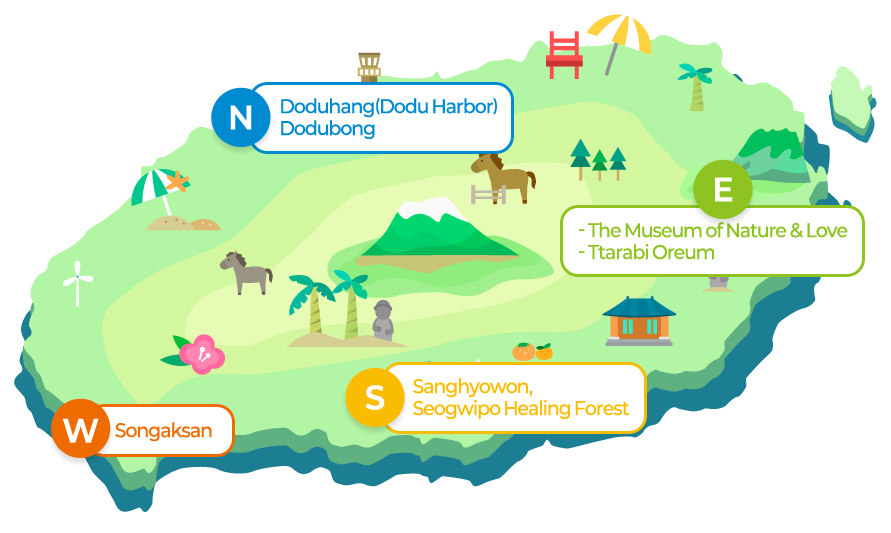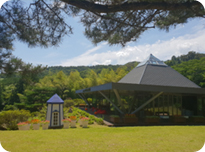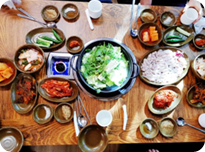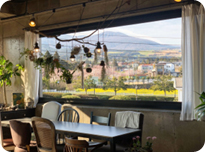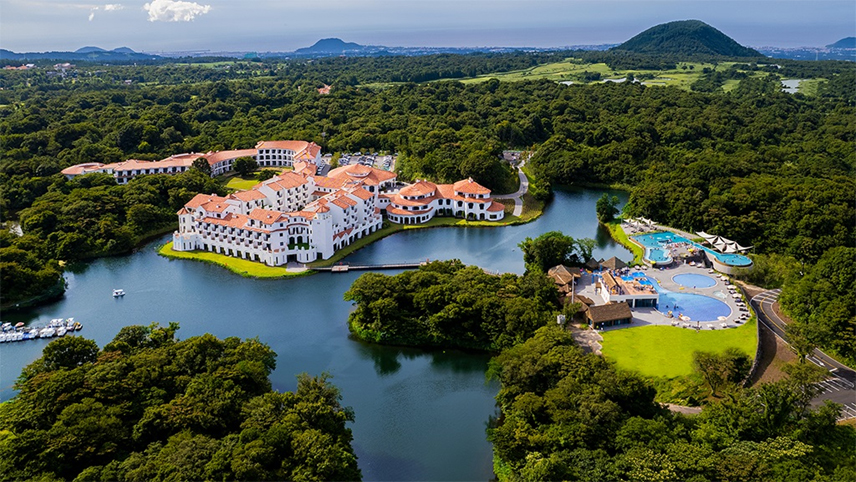TRAVEL
Conference Excursion
In-Conference Excursion
Post-Conference Excursion
Hallasan and Beyond: Exploring Jeju’s Mountain and Forest Ecosystems
On September 17, three in-conference field excursions will be arranged to explore Jeju’s forest and mountain ecosystems. Each course offers participants a direct opportunity to observe the island’s ecological features and cultural landscape through guided visits.
Team A
Jeju Forest to Coast
Itinerary
08:30 Departure from ICC JEJU
09:50-12:00 Hannam Saryeoni Oreum Forest Exploration
12:00-13:00 Lunch *Lunchbox will be provided
13:00-14:00 Bijarim Forest
14:40-15:40 Halla Eco Forest
16:40–17:40 Yongmeori Coast Walk
18:10 Arrival at ICC JEJU

-
Hannam Saryeoni Oreum Forest is a 1,203 ha forest in Namwon, Jeju, known for its rich biodiversity combining natural and planted woodlands. Managed as a model forest for sustainable forest management, it became the first in Korea to receive FSC certification in 2006.
Visit Website

-
Bijarim Forest is a rare natural site where 500- to 800-year-old torreya trees thrive. With diverse species like maple and magnolia filling the forest, visitors are greeted by a refreshing scent and a peaceful trail rich in phytoncides—offering a tranquil forest bathing experience.
Visit Website
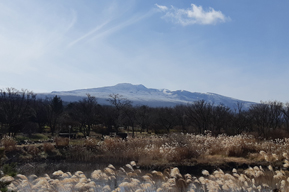
-
Hallasan Eco-Forest is a restored forest developed on degraded grasslands. This forest offers a unique chance to observe subtropical to alpine vegetation in one space. It serves as a place for rest and ecological learning, and is a key site for climate change and genetic diversity research.
Visit Website
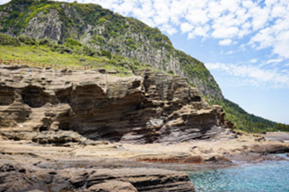
-
Yongmeori Coast is located at the foot of Sanbangsan Mountain, stretching out toward the sea like the head of a dragon diving into the ocean—hence its name, which means “Dragon Head Coast.” Tens of millions of years of wave erosion have sculpted dramatic sandstone cliffs and cave-like formations, evoking awe and a sense of timelessness.
Visit Website
Team B & C – Climbing Hallasan: Into the Ancient Wild
Teams B and C will hike Hallasan, standing 1,950 meters above sea level as South Korea’s tallest mountain.
Hallasan, a geological and ecological marvel formed by ancient volcanic activity is Jeju’s identity.
Participants will take different trails toward the Nambyeok(South Wall) Junction or Baengnokdam Crater, the summit.
Along the way, they’ll encounter diverse alpine vegetation, endemic species, and ever-changing weather.
This is more than just a hike-it’s a journey through time, nature, and the living memory of Earth.
Hallasan, a geological and ecological marvel formed by ancient volcanic activity is Jeju’s identity.
Participants will take different trails toward the Nambyeok(South Wall) Junction or Baengnokdam Crater, the summit.
Along the way, they’ll encounter diverse alpine vegetation, endemic species, and ever-changing weather.
This is more than just a hike-it’s a journey through time, nature, and the living memory of Earth.
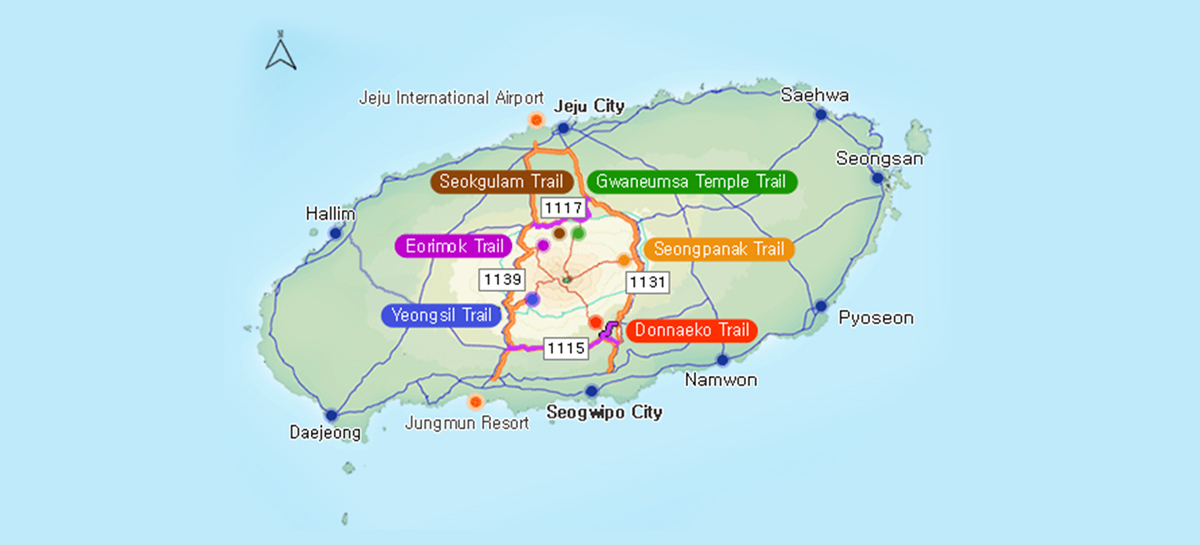
Team B
Hallasan Coniferous Forest
Itinerary
08:30 Departure from ICC JEJU
09:30-17:40 Trekking (Yeongsil Trail entrance → Witsae Oreum Shelter → Nambyeok Juncion → Witsae Oreum Shelter → Yeongsil Trail entrance)
*Lunchbox to be provided
*Lunchbox to be provided
18:10 Arrivalal at ICC JEJU
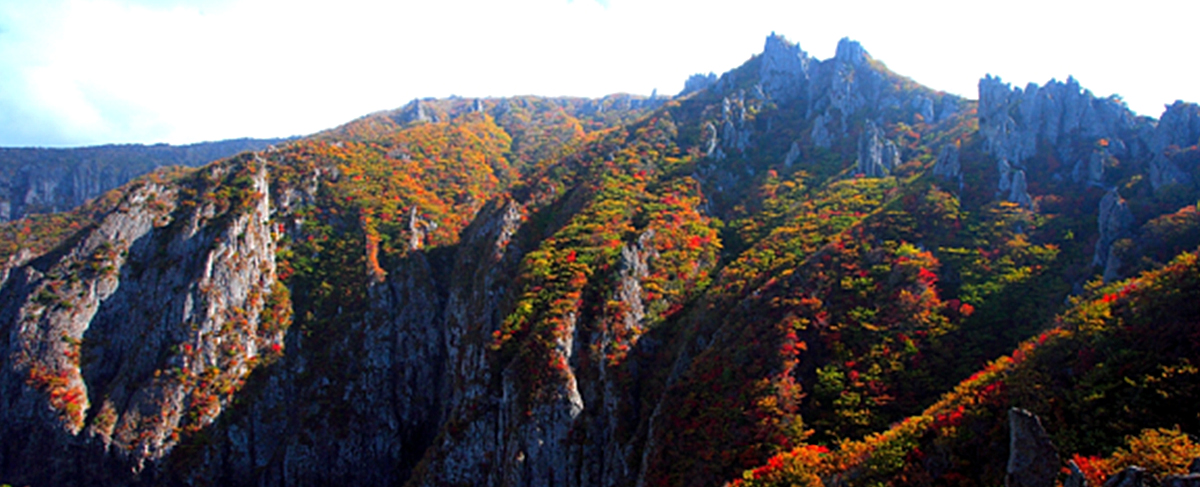
The Yeongsil Trail is the shortest trail on the southwest side of Hallasan Mountain. Passing through the breathtaking sceneries of Obaengnahan Rock Pillars and the colony of Korean fir tress, hikers reach the alpine of Seonjakjiwat. In spring, the plain is adorned with blooming hairy Korean rhododendron and Korean azalea, while in autumn, the colorful leaves around Yeongsilgiam Cliff present spectacular views. Walking along the South Wall Circular Route from the Witse Oreum Shelter for about an hour, hikers can reach the Nambyeok Junction.
Hightlight: Hallasan’s majestic pine forests and Korean fir woodlands along the trail from Witseoreum to the Nambyeok Junction.
Team C
Hallasan Summit
Itinerary
06:00 Departure from ICC JEJU
07:00-17:00 Trekking (Seongpanak Trail → Baengnokdam (Summit) → Seongpanak Trail)
*Lunchbox to be provided
*Lunchbox to be provided
19:30 Arrival at ICC JEJU
Seongpanak Trail located on the eastern side of Hallasan Mountain, features a gentle slope, making it accessible all year around. The densely forested trail with broadleaf trees offers a pleasant hiking experience, making it an ideal hiking course while enjoying a natural forest bath. After passing the Jindallaebat Shelter, hikers reach an area at 1,800 meters elevation, covered with Korean fir trees. A one-hour walk through this area leads to a steep staircase on the eastern ridge. Climbing the staircase for about 20 minutes takes the hikers to the peak of the eastern ridge of Hallasan Mountain. At the 5.8km mark, hikers can take a left path to reach the Sara Oreum Observatory where they can enjoy Sara Oreum Crater Lake and the surrounding scenery.
Gwaneumsa Temple Trail, the northern side of Hallasan Mountain features deep valleys and majestic mountain views, revealing the true nature of the mountain. People can reach the summit via this trail all year round. In addition, hikers who take another trail to reach the summit of Hallasan Mountain usually choose this trail for descent. Passing through Tamna Valley and the Gaemideung area and turning around Samgakbong Peak leads to the Yongjingak Suspension Bridge. After hiking an hour and 10 minutes along the Wanggwalleung Ridge, hikers arrive at the summit of the eastern ridge. At the trail entrance is a campsite that can accommodate up to 1,000 visitors.
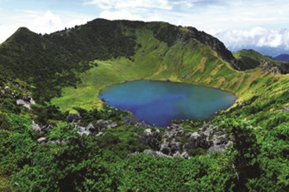
-
Baengnokdam is a crater lake at the summit of Hallasan Mountain, which is said to be where an ancient mystic riding a white deer drank water. Even when spring is in full bloom, the snow on Baegnokdam doesn’t melt, leaving lingering snow patches. This scenery is so beautiful that it has long been known as “Nokdammanseol(Late Snow at the Deer Lake)” and is considered one of the Ten Scenic Views of Yeongju (an old name of Jeju).
Highlights: Summit challenge! Hike to Baekrokdam while discovering diverse coniferous zones by elevation.
Important Notes for Team C Course:
Tour schedule may be subject to change.
Physical endurance is essential for this course.
Please dress appropriately for changing weather conditions.
